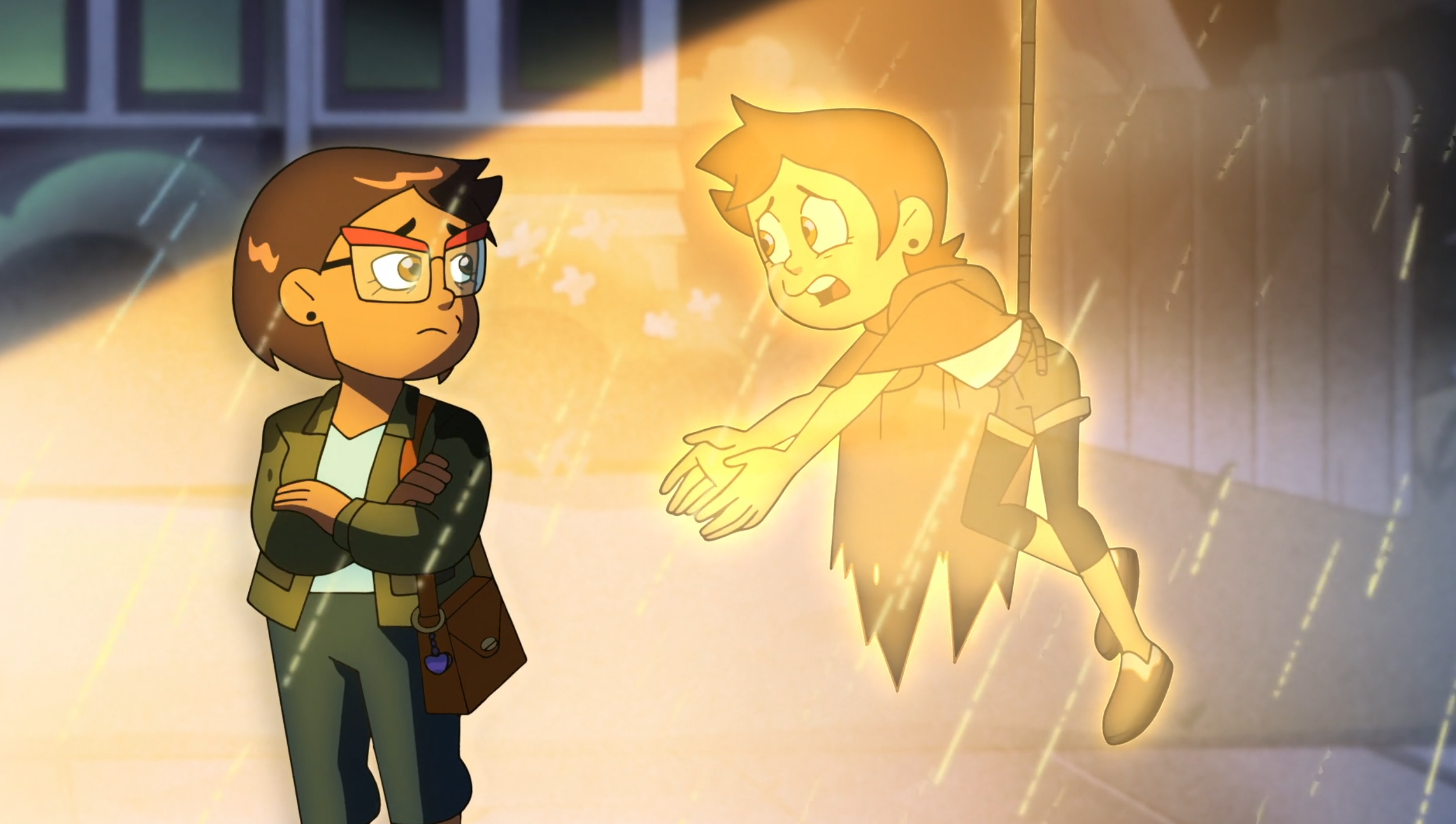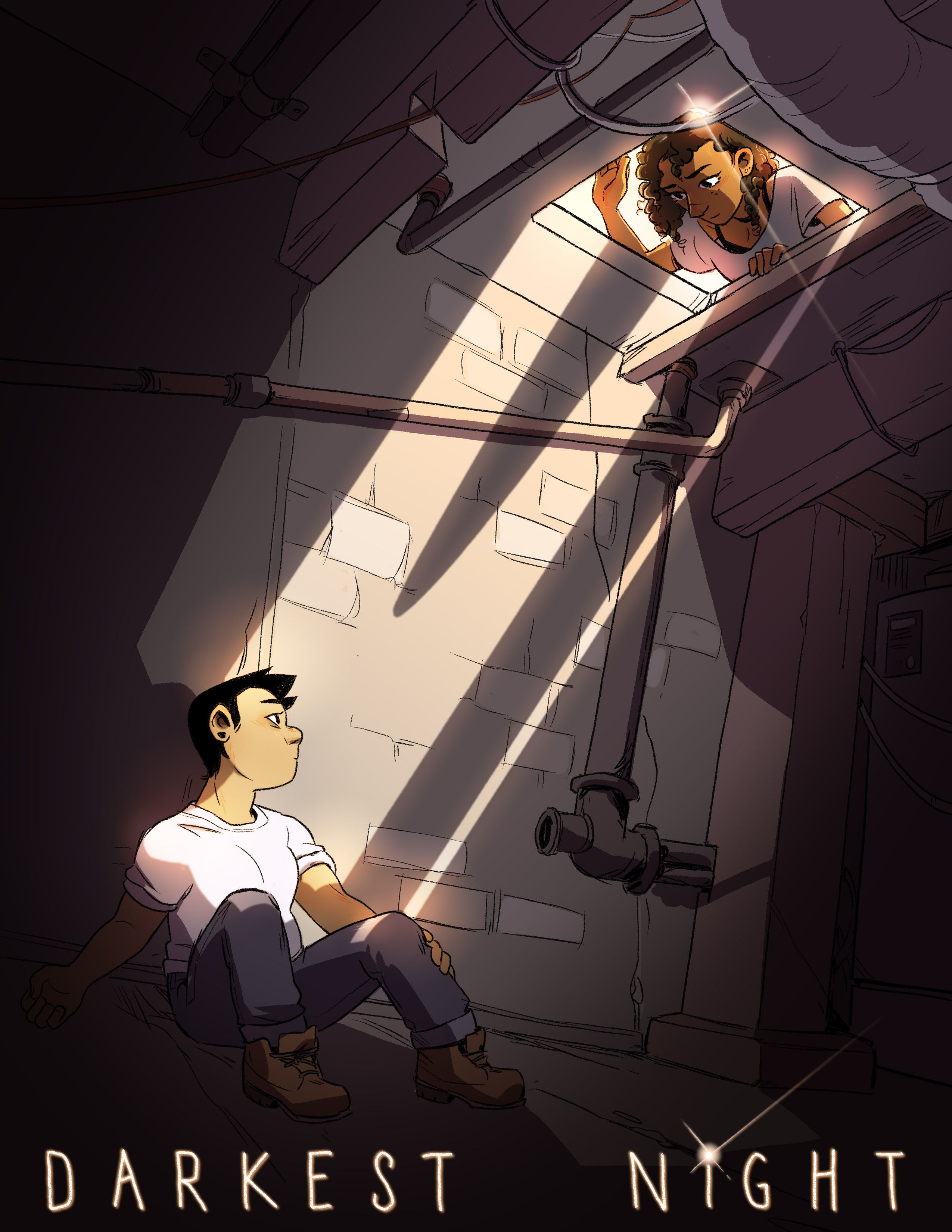“We’d been wanting to do an episode on Luz’s mom for so long,” The Owl House writer Molly Ostertag tells me about penning Yesterday’s Lie. “I was like ‘Okay, what is going on with Camila? How does she feel about Luz being gone?’ Getting to explore that and getting to give her a right to her emotions and a chance to say things was so important.”
Yesterday’s Lie was the mid-season finale, a bid farewell before The Owl House left our screens earlier this year and went on hiatus. It was a sombre closing chapter for fans, following Luz Noceda as she ventures into a homemade portal to finally reunite with her mother in the human world. Except she is little more than a spectre, only appearing in mirrors and reflections instead of being there to give her mother the reassurance she deserves. As the screen fades to black, we’re left with Luz coming to terms with the consequences of her actions.“It’s funny because it’s definitely a show for younger people and I think the vast majority of viewers will identify with Luz and not Camilla,” Ostertag explains. “But I never want to have bland characters in my stories, and I don’t think she was ever intended to be the stern mom or the mom who is always discouraging, so being able to explore that subtlety was really fun.”
Shows like The Owl House are a collaborative effort, with all manner of writers, animators, artists, and other production staff working together to assemble the finished product. “It depends on the production, but you usually build the script with everybody, figure out all the beats in the room and then you sit down to write it on your own,” Ostertag says. “Then it goes through edits, it gets storyboarded, and certain things have to change in order to make it visually comprehensible and tie into the overall story which is still being fleshed out as episodes are being written.
“I wasn’t working on the show when [Yesterday’s Lie] was being storyboarded and produced. I sort of assumed that it would change a lot so it was cool to see that images I had imagined, like Luz being reflected in the rain and saying goodbye to her mom. [It] was so clear in my head and they just perfectly nailed it which is a very, very special feeling.”
Given the workload involved, it’s a miracle that shows like this are made at all. Much like games, the production is a series of moving parts that are only able to come together through the perseverance of the team. Often this can come with creative compromise. “Sometimes you can intend for a line to be read in a totally different way, but usually it’s down to everyone just trying to make the best episode possible and what makes a script really good is not what ultimately makes the episode really good so things can be shifted around but that’s super normal.”
The Owl House is intended for a younger audience and has broken boundaries in recent months by introducing a canon queer relationship between the two lead heroines, a non-binary character, and a number of other nods to diversity. Ostertag offered her perspective on the current state of queer representation in the media. “It’s sort of like a scale,” she tells me. “On one end you have a very small audience but you get to do exactly what you want, while on the other end is a large audience but you have to censor. So I feel really proud of my work on The Owl House where I got to tell a really authentic story that I really wanted to tell for a big audience. but we did have to jump through so many more hoops because you’re not just telling this story for the queer kids you’re reaching out to, it has to appeal to a lot of people who maybe aren’t as comfortable or educated about queerness.”
Darkest Night, a new graphic novel from Ostertag that recently debuted on Substack, seeks to delve into the messier side of queer identity. It explores elements of trauma that the audience of shows like The Owl House might not be ready for, but it does so with an aura of honesty. “There’s something really fun and self-indulgent about creating a story for people who get it and I’m not trying to represent the queer community,“ Ostertag laughs. “I’m not saying ‘Look at us, we deserve rights!’ I’m just saying that this is a story for queer people. Straight people can read and enjoy it as well, but I’m not attempting to explain things. I think there’s a lot of nuance and very distinct lesbian queer feelings that might not be appealing but still really hit home for people.
“I think [representation] is starting to move on. We had an era where we really felt this pressure to have our own on-screen representation or on-page representation and I’m excited to move away from that because I love the messy. I love the messed up people who let others look at them and can say, ‘Yes, that is me and I’m still valid as a queer person.’ and so may people expect queer people to be sweet and tender but you might not be that kind of person or haven’t had that experience and feel isolated. You can feel like maybe you’re doing this wrong but there’s a lot of complexity in this life and you’re allowed to feel that. It’s something I’ve really started to put into my work.”
This vision culminates in the character Mags, Darkest Night’s protagonist who doesn’t abide by the norms we’ve come to expect from queer protagonists in the mainstream. “I think having Mags as a very butch lesbian is still something we don’t see a lot,” Ostertag says. “She is very much an object of romantic and sexual desire in the story and she’s not particularly trying very hard for that, she’s fascinated by the kind of people she’s also into and there’s something really cathartic about drawing romantic lesbian scenes with a character like Mags because I still don’t see that a lot in anything and I hope it ends up being meaningful to people.”
As for the future of queer representation, Ostertag always returns to the realm in which she found her own passion for creativity - the world of webcomics. “It takes so much to run a show, make a movie, or make something really big so I hope someone who has a story they want to tell that they just sit down and start doing it, and webcomics are such a wonderful medium for that,” she says. “You can sit down and start telling your story and be very honest about it and not worry about whether a big corporation will allow this to happen. In my career I sort of bounce between those two ends of the spectrum where I get to do the work that is bigger and will have a really tangible impact like The Owl House but then also push my own craft and push my own storytelling with small projects like Darkest Night.”
You can read our second piece delving into Darkest Night with Molly Ostertag here.

.jpg)


.png)